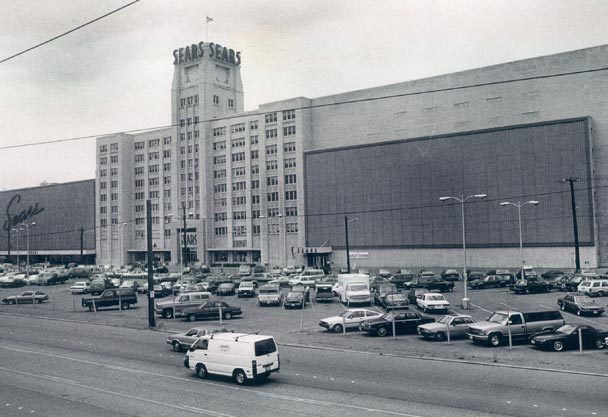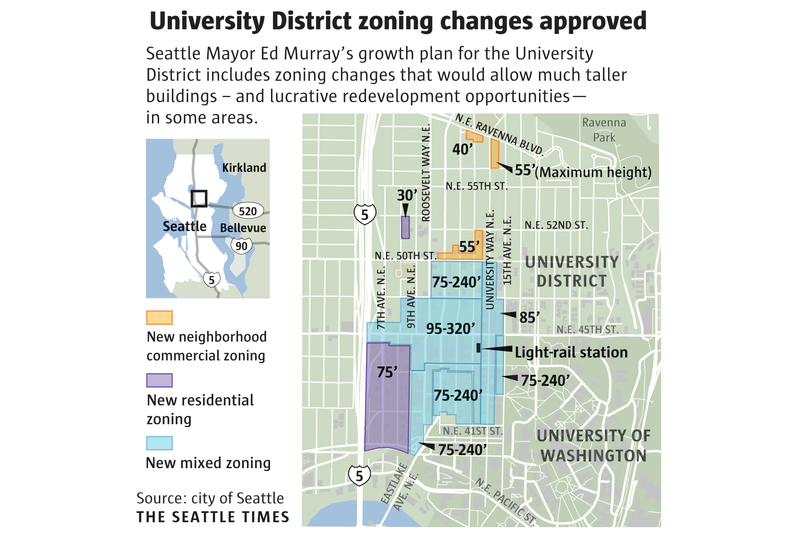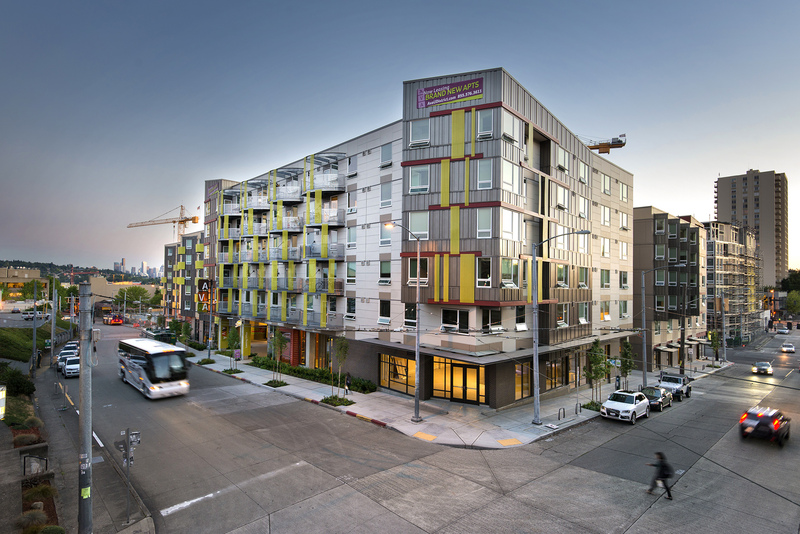Site Report #4: The Past and Future U-District

The Sears department store that closed in the 1980s. Area was converted into smaller retail and residential. (Seattle, WA. The Seattle Times)

Zoning changes made by Ed Murray that allows the construction of taller buildings. Increasing living density to create adequte and affordable housing.
"We don't want Seattle making the same mistake as San Fransisco"(Matt Goyer)

283-unit Mid-Rise Apartment located near the University of Washington. (Seattle, WA. Photo taken in Apr. 2014)
In the last 100 years the area referred to as the U-District has gone through many periods of change, including transition in physical infrastructure but also shifts in the demographic of who is living in the neighborhoods. These changes can be equated indirectly to a single source, the University of Washington. In the early 1900s the U-District was moving towards a retail based area that experienced success because of the large student body at the University but the campus began to encroach on retail spaces. Retail faded slowly as the trend changed from satisfying successful businesses to accommodating the needs of students. The student body growth witnessed by the University, has generated an exponential demand for student living areas and easy transportation in and around the campus. As the public transportation network develops to accommodate students, for example the completion of the University Stadium light rail station, more people from outside of the U-District will be able to commute to work, attend school, spend money and overall thrive in the U-District.
City of Seattle Office of Planning and Community Development director Samuel Assefa summarized the U-District Urban Design Legislation to four main categories: Zoning changes, New design, Mandatory Housing Affordability (MHA) requirements and New requirements and incentives for amenities. With hopes to “advance a plan that will help align future growth with local priorities, including affordability, public space, diverse and attractive architecture, and preserving character buildings” (Seattle City Government, Office of Planning and Community Development. Assefa), the goal of the legislation is to make the U-District as efficient, affordable and appealing for student living but at the same time maintain older signature landmarks. Two of the main focuses of this legislation are affordable housing and zoning changes, which will allow taller building with higher living capacity to be built around campus. Both of these changes will have an important influence on the living experience of students living nearby and those transitioning in their life from school to work. Mayor of Seattle, Ed Murry put it best when he said that his hope is for “a city where people who work in Seattle can actually live here”(Seattle City Government, Office of Planning and Community Development, Murray 25). With more affordable places to live, the U-District will develop more as a hub for urban growth parallel to the University’s advances in wealth and popularity.
I do not think that this legislation will have a great effect on my block immediately, because the block falls outside of the legislation area, but it is still good progress for “local priorities” (Seattle City Government, Office of Planning and Community Development, Assefa 8). I think that the proposed zoning changes have the potential to make the biggest impact on my block if the changes were not contained to the core neighborhood, since housing is already lacking on my block. If you refer to the map of backyard cottages built in the last ten years found in my Site Report 3: Audio Tour, it is easy to see that demand for living space is much greater than the living capacity provided by current residential options around the Roosevelt District. Backyard Cottages are a small scale alleviation to the demand for increased living capacity per block but are in no way a solution to the growing demand for living space. I do believe that the demand for living space may overcome the demand for local retail in the near future but I do not think my block will witness anything more than minimal changes to its purpose.
Each year that the University accepts another round of students, both retail and residential businesses are injected with a new customer base. The businesses that appeal to this demographic of students will succeed and those that do not will fall behind. With growing demand for living space, retail businesses that are not advancing financially may be replaced with residential options. Small retail stores such as Café Racer will most likely not be repurposed because of the overall student appeal of coffee but other businesses will fall quickly depending on their proximity to campus. However, the few businesses on my block other than Café Racer, find non-student demand from the lack of competitors and proximity high density living. For example, the University License Notary may not be the most popular business on my block but because it is the closest License Notary to the U-District and the next nearest one is in Ballard, the business draws in customer from at the very least a two mile radius. My block will most likely feel the impact of the need for living space soon but I am doubtful that any major changes will happen in upcoming years.
The effect of the University of Washington on the surrounding areas in the U-District are overall extensive, gradual but also subtle. At this moment, the U-District is cross between urban and suburban living, leaning heavily on urban. Some might be afraid that with this proposed legislation that new skyscrapers will start popping up everywhere but according to the U-District Residential Market Analysis, “High-Rise development is not likely to be financially feasible in the U-District” (City of Seattle Design and PLanning Department, Heartland 3), for some time. This does not mean that a student-based U-District is unreachable. There are other options such as Mid-Rise apartments that would greatly assist the housing issue and are also financially feasible. These Mid-Rises may start showing up gradually over the next couple of years lessening the demand for housing space and allowing for retail to redevelop to an extremely urban level. The ideal urban center consists of affordable housing, sustainable retail and market, general amenities and public infrastructure(Fruend). A U-District with an abundance of affordable high density living and readily available retail is my ideal version of an urban student-based U-District.
